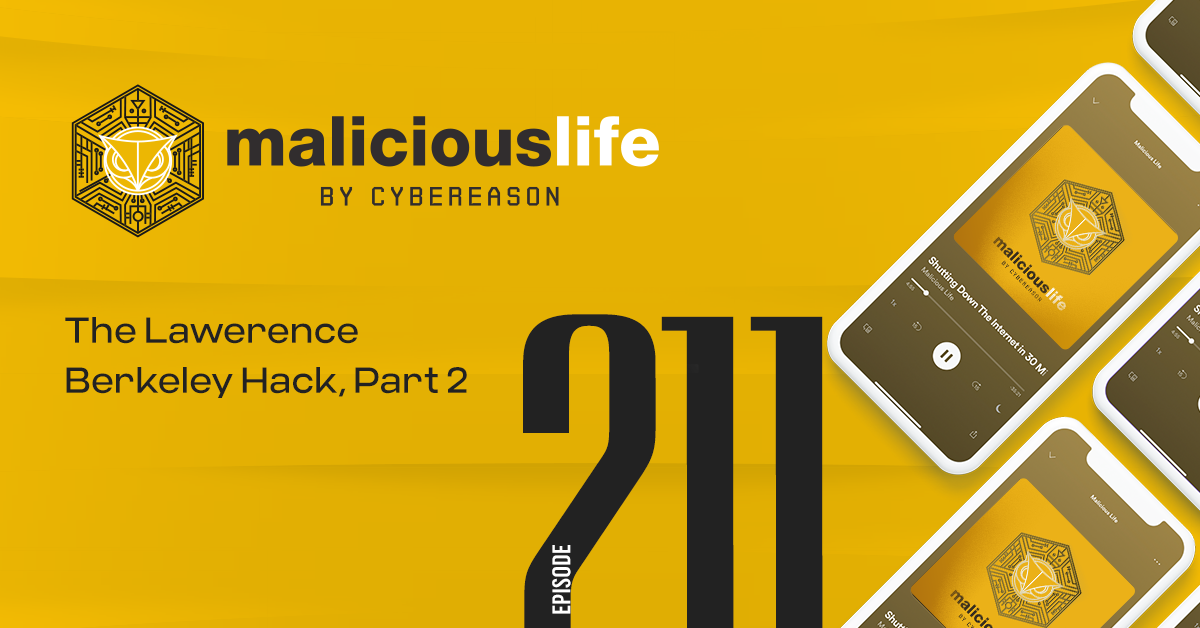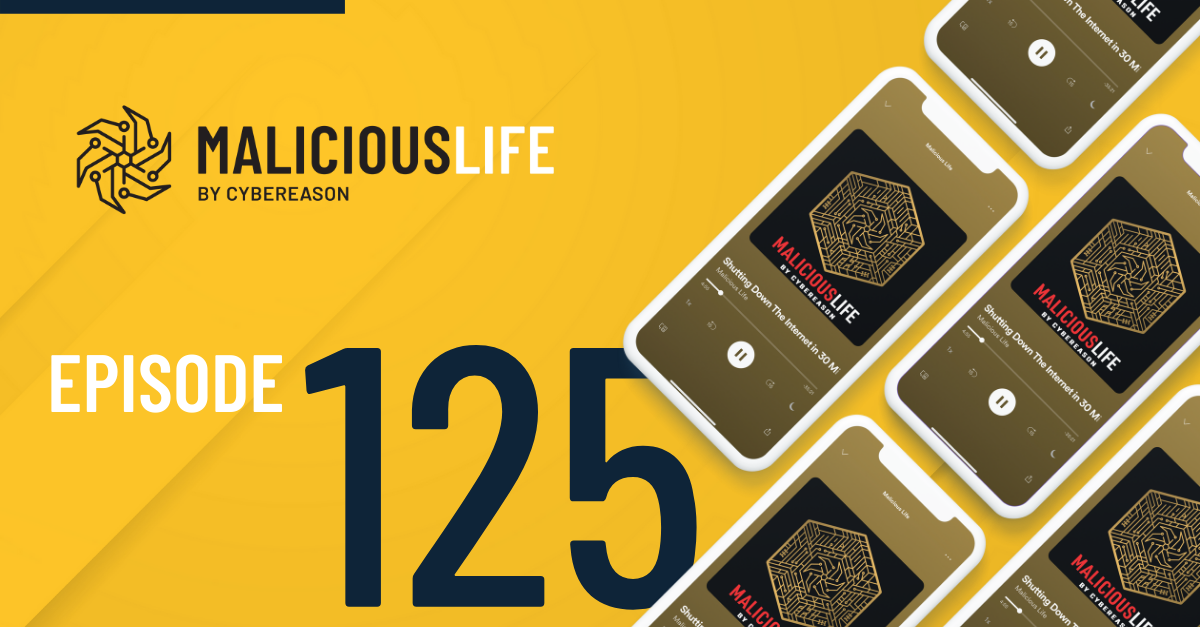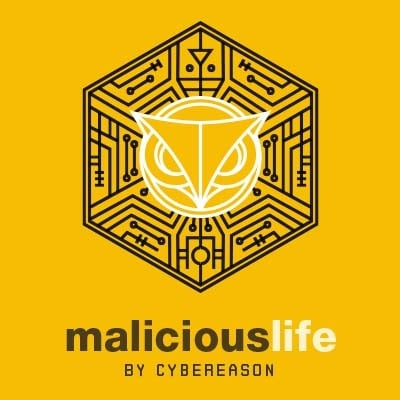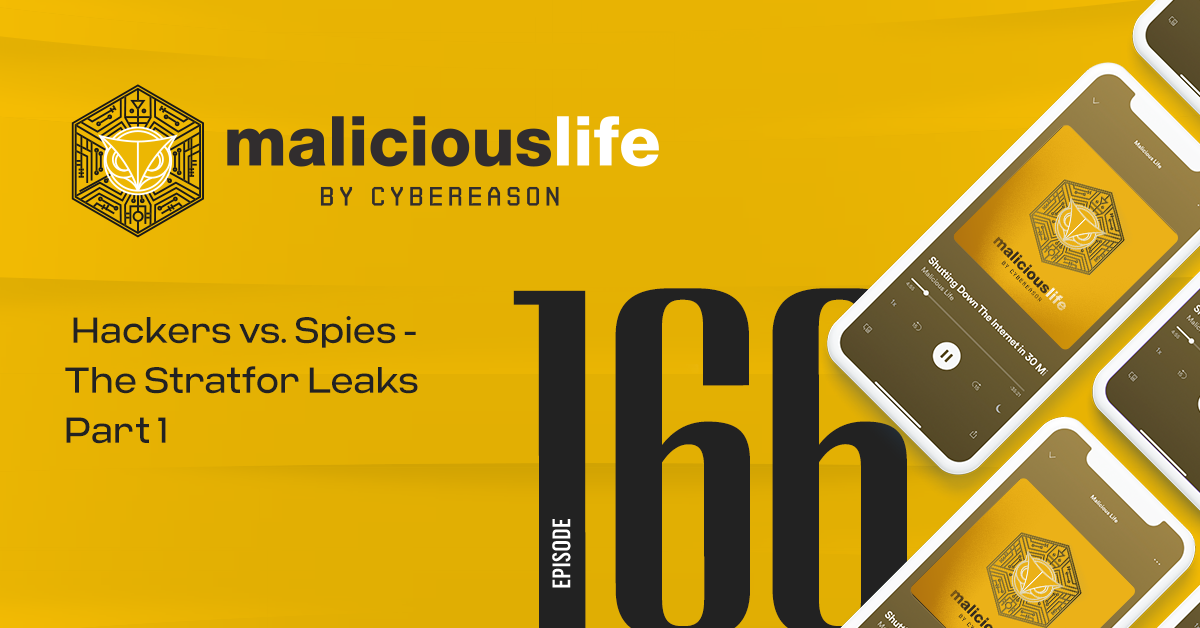Malicious Life Podcast: The Life and Times of John McAfee Transcript
In 2012, while living his best life in Belize as a hypersexual, drug enthusiast gun-toting paranoid, just before the double-murder, rape, tax evasion, fraud and money laundering allegations; John David McAfee, genius tech entrepreneur and millionaire, sold the rights to his life’s story to IMPACT MEDIA- an innovative production company based in Canada. IMPACT MEDIA has been documenting every aspect of M’s life ever since. As of July 29th of this year, they have begun auctioning NFTs – a sort of digital signature of authenticity – of: ‘UnInstalled: The Official John McAfee Story.’
You can now bid on chapters, b-rolls, images, personal files, audio files and digital art by or of McAfee on OpenSea, an NFT marketplace. For example, there’s a video titled – ‘OH! Sheep Just Got Real!’, of McAfee dressed in a half opened white robe, holding what looks to be a hotel room service menu, committing lewd acts with a sheep while his wife Janice, wearing a Team McAfee shirt, watches. As of today, this fine piece of digital art is for sale at about $77.89. I say ‘about’ because all sales are in cryptocurrency.
Or maybe you’d rather own a piece of viral history from McAfee’s 2013 video “How to Uninstall McAfee AntiVirus”. It’s a funny parody, but it tells a lot about the man. There’s a frame at around the 3:32 mark where, if you pause the video and just stare at it, you’d see a 68-year-old bear chested, holster toting McAfee with white powder covering his nose and mouth. He is sitting at a desk covered with firearms, white powder and a box of Bath Salts. Behind him is the world’s worst greenscreen gentleman’s library. He is surrounded by six gyrating young women of Portland’s “Club Exotica for Men”, whom he refers to as his personal assistants, all the while preaching, in his deep soothing voice, why you should uninstall McAfee Antivirus’ shitty software.
F**k You Money
Watching these videos, it’s obvious that John McAfee didn’t give a damn about what other people thought about him. Why? well, firstly, because as we’ll soon learn – that was just the kind of man he was. But there’s also the matter of money, of course. F**k You Money.
The Urban Dictionary defines the term ‘F**k You Money’ as –
“The exact amount of money required in order to tell an individual or organization to go f**k themselves without facing repercussions.”
You probably heard about Minecraft, a hugely popular computer game. Minecraft was created by Markus Persson, aka Notch – who subsequently sold the game to Microsoft for some 2.5B$. A few years later, in 2016, Notch wrote the following in a Reddit post:
“Once I realized I had fuck-you money and didn’t care about my public image any more because it didn’t affect my day to day life in any way, I started speaking out against things I personally think are wrong.”
John McAfee had “F**k You Money”, and he didn’t care even one bit about the repercussions of his actions or his public image. What do you get when you put so much money in the hands of someone with a personality so…hmm…unusual?… Well, buckle up: this is going to be one hell of a ride.
An Innovative Businessman
John McAfee was born in the U.K. in 1945, to a British mother and an American father. He describes his father as an extremely unhappy man who drowned his sorrows in copious amounts of alcohol and random violent beatings of John and his mother. When he was 15 years old, a few years after moving to Virginia, his father committed suicide. In a 2012 interview with Joshua Davis of ’Wired’, McAfee contemplated his father’s ongoing presence in his life, saying:
“Every day I wake up with him… Every relationship I have, he’s by my side; every mistrust, he is the negotiator of that mistrust. So, my life is fucked.”
While studying for a degree in mathematics at College, McAfee worked as a door-to-door magazine salesman. He used to knock on people’s doors and tell them they’ve won a one-year free subscription to a magazine. All they had to do was pay for shipping and handling. McAfee admits to making a small fortune off this venture, while still in school. Ten years later he would be one of the first tech entrepreneurs to use the very same tactic in selling people on McAfee Antivirus software: giving out the software for free – a novel business practice in the late 80’s – while charging a license fee for services such as tech support or upgrades.
After college he got married, had a daughter and then divorced. He also did a few short stints as a programmer, OS architect and director of engineering for prominent employers such as GE, NASA, Univac, Omex and Xerox. But mostly he spent the next ten years accumulating vast knowledge in computing and narcotics.
McAfee lost his first job out of school for buying marijuana. He later left a position with Missouri Pacific Railroad after snorting an entire bag of DMT, a hallucinogenic drug, in his office and developing such a bad case of paranoia that he thought his co-workers were out to get him. He then ran outside and hid for hours behind a dumpster, never to return. He also sold drugs to his colleagues and subordinates in various companies.
The 80’s marked the rise of microcomputers such as the Apple II, Commodore PET, Amiga 100 and many others. Computers, which until then were only available to military, academic and business organizations – suddenly became accessible to the greater public. Lots of people became interested in programming – and many of them figured out, independently, how to write self-replicating programs, i.e. computer viruses.
The first virus for a personal microcomputer was the ‘Elk Cloner’ for the Apple II, written in 1982. It took four more years for the first IBM PC virus to make an appearance. It was the “Pakistani Brain” virus, created by two brothers – Basit and Amjad – who ran a computer store in Lahore, Pakistan. It was designed to spread via floppy disks: once inserted into the floppy drive the Brain virus would display a message: “Welcome to the Dungeon. 1986 Basit & Amjad. Brain Computer Services”, followed by their address and three phone numbers. Yeah, virus authors were a bit naive back then…
Brain was a huge success, in terms of its virality: it is said to have infected about 100,000 computers worldwide within a year – not bad, considering that the Internet wasn’t yet available to the public, and sharing of software and data was mostly done via ‘Sneakernet’: that is, kids wearing sneakers, swapping pirated software on floppy disks.
In 1986, John McAfee came across the Brain virus. Curious, he read the virus’s code – and quickly realized the source of its power: the virus was a self-replicating program, a foreign and highly unusual concept to most programmers back then – and even to most modern developers. This idea both terrified and fascinated McAfee. In it he saw an international threat – and a grand business opportunity. So, he decided to seize the rare opportunity, and created the first commercial antivirus software.
We don’t have a lot of information about that particular software, but it is very likely that McAfee used the same technique used by almost all other antivirus programs created back then – signature matching. Basically, the antivirus software would keep a database of signatures – snippets of code taken from all known viruses found in the wild – and scan the computer for code matching any of these signatures. A simple, yet effective way to detect already known viruses – as long as there weren’t too many of them, naturally.
With buckets of charisma and an ability to break down complex concepts to an easy-to-understand sales pitch, he booked interviews with every media outlet that would have him, and went on tour to sell his cure for the virus. It was a little bit of a roadshow.
In a tv interview snippet from 1988, McAfee informed the yet unaware population that:
“I see infections of small companies where every computer has become infected and the company is near collapse from financial loss… We’re seeing a new virus arrive on the scene at the rate of about one a month now. most of the new viruses are worse than the old viruses because they are more subtle, more sophisticated and they cause a great deal more damage.”
The interviewer goes on to explain that: “McAfee and others have developed new countermeasures called vaccines and antiviral programs, that detect and neutralize viral infections.”
It worked.
Within five years, half of Fortune 100 companies had installed McAfee Antivirus software on their computer. By 1990, McAfee Associates was making $5M a year in revenue with hardly any overhead expenses. McAfee even went on to write a book by the name:
‘Computer Viruses, Worms, Data Diddlers, Killer Programs, and Other Threats to Your System’
The early 1990s saw a dramatic rise in the number of new viruses, and sparked bouts of panic in the public, mostly fueled by exaggerated reports in the media by reporters who themselves knew very little about the novel phenomena. The demand for McAfee’s antivirus software skyrocketed, and the company’s revenue increased tenfold, making McAfee Associates viable for its first IPO on Nasdaq.
A Crazy Culture
For seven years he led the small army of McAfee Associates. They worked around the clock, slept under their desks and inhaled drugs. Andrea Nation, an executive of McAfee Associates at the time, recounts in the 2016 SHOWTIME documentary ‘Gringo: The Dangerous Life of John McAfee’, that:
“It was a crazy culture… three of the women were supposedly witches, and they would sit in the conference room and have a little chant… They had a group called little foxes where they would give points for having sex in different spots in the office. John being this free spirit that made the culture of the company. He was not the typical suit and tie guy.”
McAfee wasn’t pleased with how things in the company changed following the IPO. On a Reddit Ask-Me-Anything with McAfee on August, 2015 he cemented his dislike of the software by writing :
“When I started, there were 4 of us. Generating $10M/yr, we could have lived happily for (the rest of) our lives on that… We had to grow, we didn’t have sales, marketing, etc… Once I went public, I had 1000 bosses, investors, FTC, SEC, all my time in meetings and interviews… I used to spend time taking apart viruses, not (now) I was an accountant.”
And so, in 1993, McAfee stepped down from the CEO position and became the chief technology officer – before leaving the company for good, selling his shares and the rights to his name for $100M.
In 2010 Intel bought McAfee Associates for $7.68B, and four years later changed its name to Intel Security Group. John McAfee was elated:
“I am now everlastingly grateful to Intel for freeing me from this terrible association with the worst software on the planet. These are not my words, but the words of millions of irate users.”
However, the name-change lasted only three years, and in 2017 the company was renamed McAfee Corp..
After selling his namesake company, McAfee ventured into the field of instant messaging with PowWow, the first internet instant message and chat program for Windows. He invested in cyber security companies, started his own ultralight adventure resort in New Mexico, established and headed a yoga retreat sanctuary in Colorado and wrote four books about yoga and meditation (which he later called crap). After that he moved to Belize and started an armed militia.
But… I’m getting ahead of myself.
Belize
The McAfee Sky Gypsies, an ultralight adventure tourism company, was established in rural New Mexico. There McAfee claims to have invented aerotrekking – a new aviation sport for low flying ultra-lights. It’s worth mentioning that low flying is extremely dangerous: it leaves no room for error… and indeed, in 2006 McAfee’s 22-year-old nephew, the company’s head flight instructor, crashed his ultra-light while flying a tourist in Starvation Canyon, Arizona. McAfee was found liable in the wrongful death of the tourist and ordered to pay $2.5M to the man’s family.
Then, in 2008, the global financial crisis hit. In an interview for the New York Times in August 2009, McAfee admitted that the crisis had cost him dearly: From a fortune of $100M, he was now worth only $4M. In a separate interview a few years later McAfee claimed that he did not, in fact, lose 96% of his fortune but rather spread the rumor to dissuade debt collectors from pursuing him. In any case, already twice divorced and with pending lawsuits against him, citing favorable taxes and a desire to outrun debt collectors – McAfee decided to move to Belize.
He bought property on the island of Ambergris Caye, 15 Km off the coast of Belize and moved there with his girlfriend of 12 years.
Two years after arriving in Belize, in February 2010, McAfee started a herbal pharmaceutical company named QuorumEx, with Allison Adonizio, a young postgraduate student of microbiology from Harvard. Their aim was to produce antibiotics from tropical plants. For his new venture he moved to the outskirts of a town named Orange Walk, in the heart of the Belizean jungle. There, McAfee built a dream compound equipped with a lab for Adonizio, a main house and adjacent bungalows for his many teenage girlfriends and an armed militia of ex-felons.
In the SHOWTIME documentary, Adonizio accused McAfee of drugging and raping her when she threatened to leave their mutual endeavor. She describes the moment she woke up in his living room as:
“He was standing over me naked. I woke up the next morning. I was sick, I was dry heaving. I was dizzy. I grabbed my clothes—I don’t even remember taking them off. I went back to my house, I locked myself in my apartment, and I sat in the shower until the water ran cold and I was crying and I was bleeding.”
She said that during the time she spent on the compound he behaved irrationally, was upset with the slow pace of the research process and at some point informed her that they are being watched by spies from pharmaceutical giants such as Glaxo and Bayer, which were hiding in the jungle across the river from the compound.
Adonizio’s friends had to extract her from the compound and hide her until her flight back to the U.S.
Davis, the Wired journalist I mentioned earlier, was working on a series of interviews with McAfee and visited the compound several times. He later admitted in an interview with ABC News that he was afraid for his life while on the compound. He describes McAfee as being heavily armed at all times and suffering from random breaks from reality.
“… With the gun still to his head, he starts pulling the trigger incessantly. “I can do this all day long,” he says to the sound of the hammer clicking. “I can do this a thousand times. Ten thousand times. Nothing will ever happen. Why? Because you have missed something. You are operating on an assumption about reality that is wrong.”
McAfee, ever the media prankster, tweeted about his meetings with Davis:
“Joshua was the most gullible and naive man I had ever met.”
The compound, according to Davis, was run by armed bodyguards and a harem of at least five teenage girls at a time, whom McAfee confessed to having hours- and sometimes day-long sex sessions with after inhaling so called “Bath Salts”: a Synthetic drug similar to cocaine. Bath Salts are known for promoting erratic and sometimes violent behavior, hallucinations, paranoia, panic attacks, delusions and increased sexual drive. McAfee called it his “super perv powder”.
People typically swallow, snort smoke or inject Bath Salts. McAfee, which was suspected of manufacturing the drug, preferred rectal insertion.
At some point in his four-year stint in Belize, McAfee decided to rid the neighboring town of Carmelita, population 1,600, of the local drug cartel which his girlfriend convinced him, ran it.
Since Carmelita was too small to have its own police station, McAfee took it upon himself to arm the neighboring town’s police force with M16s, new uniforms, pepper spray, batons and stun guns. After realizing this was not enough, he also trained 23 ex-felons to serve as the Carmelita security force, which he became head of.
The people of Carmelita said he walked around, John Wayne style, with a gun strapped to his chest – demanding small-time criminals to reform or else. He also instituted an 8PM curfew.
On Monday, April 30th, 2012 at 4:50 am, while McAfee was in bed with his teenage girlfriend, dozens of men wearing camouflage uniforms and armed with submachine guns stormed his compound, forcing everybody out of their bungalows. That was the GSU, Gang Suppression Unit:an elite Belizian police force in charge of dismantling criminal organizations. According to Davis, McAfee was slammed against the wall and handcuffed after being told he was detained on suspicion of producing methamphetamine. To that McAfee answered:
“That’s a startling hypothesis, sir, because I haven’t sold drugs since 1983.”
After hours of searching the compound for meth manufacturing facilities and illegal firearms, McAfee, who claims he was left handcuffed for 14 hours in the sun, was taken to jail for one night and later released without charge.
According to McAfee , the real reason behind the raid was his lack of enthusiasm in paying bribes to local politicians.
“I was there for a year and the local politician sent a representative and asked for $2 million for a campaign donation,” he told the BBC. “I said no. Two weeks later they raided my compound.”
In a subsequent video which he posted on YouTube, he also referres to the GSU as “the death squad” and its members as, “uneducated idiots, hell bent on executing gang members instead of arresting them”.
A Mysterious Murder
Shortly after the GSU raid, McAfee packed up his merry harem and militia and moved back to the island of Ambergris Caye, to the chagrin of neighbors and tourists alike. Armed guards, teenage girls and 11 barking dogs aren’t good for business on a tropical island.
One of McAfee’s more vocal opponents there was his next door neighbor Gregory Faull. Faull was a 52-year-old contractor and bar owner from Florida, who moved to Belize to retire and flip rental homes. In the SHOWTIME documentary Faull’s father tells that his son went to McAfee and asked him to do something about the dogs, which McAfee let loose on the beach. According to Faull Sr., McAfee got a shotgun, cycled it and told his son to get off his property.
A few days later McAfee’s dogs were poisoned…and a day after the poisoning, Gregory Faull was found dead in his living room, face up, with a single gunshot to the back of his head. According to police he also had taser marks all over his body. At around that time, McAfee’s property manager says he was asked to pass an envelope which he later found out contained $5,000 to a known violent gang member and sometimes employee of McAfee, Eddie Mac.
Suspicion was immediately laid on McAfee. Rather than agreeing to be taken for questioning by the police, he decided to flee. In a phone interview with Davis, from his place of hiding, McAfee claims to have escaped police capture by hiding for 18 hours in a sand pit, covered by a cardboard box.
After three days of moving around friends’ houses in Belize, McAfee illegally crossed the border to Guatemala on a boat. Three weeks later he was caught by local police in a five-star hotel in Guatemala City after a photographer from Vice magazine, which came to interview him at his hideout, accidently posted a photo of McAfee, taken with an iphone, with the geolocation metadata still attached.
McAfee later posted on his blog whoismcafee.com that he is terminating his relationship with Vice Magazine, believing that his whereabouts were leaked on purpose.
“Due to information just received, It is no longer clear to Mr. McAfee that the “accidental” release of his co-ordinates due to Vice Magazine’s editorial department’s failure to remove location data from their now notorious photo, was indeed an accident. This incident led directly to Mr. McAfee’s arrest. The reason, possibly, was that Vice wanted exclusive access to Mr. McAfee’s arrest, which they in fact obtained and broadcast. “
After his request for political asylum in Guatemala was denied, McAfee was put in a detention center awaiting deportation to Belize. Forever a fan of theatrics, McAfee faked a heart attack and was taken to a hospital for treatment, with that buying more time for his lawyer to file a series of appeals that ultimately prevented his deportation to Belize, thus hastening the decision to send him back to the United States. A Florida court later found McAfee liable for the wrongful death of Gregory Faull and ordered him to pay $25M to the Faull estate.
Running For President
On his first day back in Miami Beach he was propositioned by a prostitute named Janice Dyson. 38 years his junior, she later became his third wife. This was also the year he sold the rights to his lifes’ story to IMPACT MEDIA.
After settling with his new wife in Portland, Oregon he founded or joined – as a tech consultant – several cyber security and cryptocurrency companies.
In September 2015, McAfee announced his candidacy for the 2016 presidential race. Deciding to start his own party, The Cyber Party, whose aim was to bring back online privacy and fix governmental cyber illiteracy. He was quoted saying to CNNMoney:
“We are losing privacy at an alarming rate — we have none left… We’ve given up so much for the illusion of security and our government is simply dysfunctional.”
McAfee said the desire to respond to terrorist attacks had opened citizens up to excessive surveillance. He added that the U.S. government “lacks an understanding of the basic technology that runs the world.”
Realizing, after a few months, that establishing a new party is an expensive and time consuming endeavor, he decided to run for the Libertarian Party’s nomination. He came in third of three candidates.
Ever the privacy evangelist, McAfee ran again for president in 2020, this time on a platform serving the crypto community. As he stated in an article for the Coin Rivet website:
“…Cryptocurrencies free the individual from the yoke of currency controlled by governments which control us and our lives… Governments will not be able to collect taxes when everyone is using privacy coins. Governments will disappear as we know them because they will not be able to fund their excess. It’s a good thing. For the first time in human history it will be given financial freedom.”
Beginning Of the End
If I had to pick a watershed moment in McAfee’s public life, some demarcation of the beginning of the end, it might be his tweet from December 21, 2017.
“Beginning tomorrow, I will each day talk about a unique altcoin. Most of the 2,000 coins are trash or scams. I’ve read every white paper. The few I’m connected to I will tell you. The rest I have no position in. These coins will change the world. You can support that change”
Brian Barret of Wired, in his article about McAfee’s indictment, points out that in reality, McAfee was mostly paid for his endorsements with more substantiated coins like Bitcoin and Ethereum. He says that McAfee cashed out on obscure coins which he first bought and then promoted in his tweets, like Electoneum which jumped 40% that very same day or XVR which prosecutors say he sold at a 500% profit after his tweeted endorsement.
According to the U.S. Securities and Exchange Commission (SEC), McAfee and his partners at Team McAfee were charged with two fraudulent schemes. The first, promoting junk ICOs – Initial Coin Offerings, which are a way for new cryptocurrencies to raise funds for a new coin, app or service. McAfee and partners allegedly used twitter to promote multiple ICOs while claiming impartiality while in reality, they were paid over $23M million worth of digital assets for their support. The second charge, a pump-and-dump scheme, asserted that McAfee and executive assistant Jimmy Watson bought digital assets for cheap before promoting them on McAfee’s twitter account and then sold the assets once they hit peak price increase. To round up the charges, McAfee was accused of laundering the earnings via an unnamed exchange operating in New York City.
Sometime later, a Grand Jury convened in Tennessee to lay down charges against him, his wife and several members of his presidential campaign, on various accounts of tax fraud. Thus, in January 2019, he boarded a mega yacht with his wife and several bodyguards and sailed to the murky safety of international waters.
Mind you, he kept up his campaign for president from exile, only dropping out in March 2020 after being charged with investment fraud and money laundering. Plus he had not been living in the U.S. for over a year by then.
McAfee sailed around the world for almost two years, before being arrested in October, 2020 at Barcelona’s airport. He was then jailed for eight months awaiting a Spanish court ruling regarding an extradition request from the United States.
The DOJ says that
“between the years 2014-2018 he earned millions in income from promoting cryptocurrencies, consulting work, speaking engagements, and selling the rights to his life story for a documentary, for which he failed to file tax returns.”
From his Spanish prison, McAfee tweeted that the allegations were overblown and that his tweeted coin endorsement came in good faith. He added that he lost money from the crash of some of the coins he promoted, as he was paid in said currency. He also claimed on Twitter that he had not filed a tax return since 2010, boasting:
“I have not filed a tax return for 8 years. Why?
1: taxation is illegal.
2: I paid tens of millions already and received Jack Shit in services.
I’m done making money. I live off of cash from McAfee Inc.
My net income is negative. But I am a prime target for the IRS. Here I am.“
On the 23rd of June 2021, the Spanish National Court authorized his extradition. According to his lawyer, McAfee hanged himself on that same day, fearing a sentence of over 30 years in prison, if convicted in an American court.
Dead Man’s Switch
But naturally, a man such as John McAfee wouldn’t let Death interfere with his own narrative, wouldn’t he?..
In November 2019, two years before his death McAfee tweeted:
“Getting subtle messages from U.S. officials saying, in effect: “We’re coming for you McAfee! We’re going to kill yourself”. I got a tattoo today just in case. If I suicide myself, I didn’t. I was whackd. Check my right arm.“
This refers to the word $WHACKD which he tattooed on his right bicep.
This tweet started a rumor about a McAfee Dead Man’s Switch – 31TB of incriminating data about corrupt officials and governments, which will be released on the internet upon his untimely death. So far, no such incriminating trove of data has surfaced.
Also, a few hours after his death, someone posted the letter Q on McAfee’s Instagram account – supposedly referring to the mythical Q, leader of QAnon. It was taken down a few hours later.
McAfee’s wife, Janice, said that in his postmortem identification, she was only shown his head, and that the rest of his body was covered with a sheet. This prompted more murder allegations amongst the self appointed slueths of the internet.
Epilogue
So, what do you get when you take a hypersexual, drug enthusiast gun-toting paranoid – and add some serious F**k You Money to the mix? This is what you get: a life so bizarre, so unbelievably extreme, that people will tell its story even after you’re long gone. In fact several Hollywood producers decided to make a biopic of McAfee’s life, based on Davis’ Wired article. Its working title: “King of the Jungle”. It is rumored that Johnny Depp and Michael Keaton are interested in playing McAfee.
It’s tempting to see John McAfee’s life as proof that in our present culture, if you have enough money – you can do whatever the heck you want. Double-murder? rape? Tax evasion? You can get away with practically anything, if you have enough cash in the bank and little empathy and regard for consequence.
But I think that would be the wrong conclusion. Sure, John McAffee’s wealth allowed him to indulge his thrill seeking personality to the absolute limit. His charm, name, money and good looks continually opened career doors and border crossings for him. But in the end, it turns out that McAfee didn’t have F**k You Money after all. If we define ‘F**k You Money’ as the amount of money required in order to be able to do anything without facing repercussions – then McAfee simply didn’t have enough money to do just that. There’s little doubt that John McAfee knew how to manipulate the media: he was insanely smart, full of charm and charisma, and he knew how to take advantage of the public’s curiosity in order to make even more money – but in the end, he couldn’t escape from the Law. In spite of all his money and charisma, he ended his life in a prison cell, waiting for a trial that in all probability would have ended in a long jail sentence.
And I think this says something good about our society. It’s good to know that even people as rich as McAfee aren’t above the law. Sure, it might take the law a long time to get to them, and maybe some of them – like Jeffrey Epstien and McAfee – will choose to take their own lives so as to not face the consequences of their actions… but in the end, they weren’t above the law after all.
Which raises an interesting question: is there such a thing as real F**k You Money, and if so – how much money is that?…







